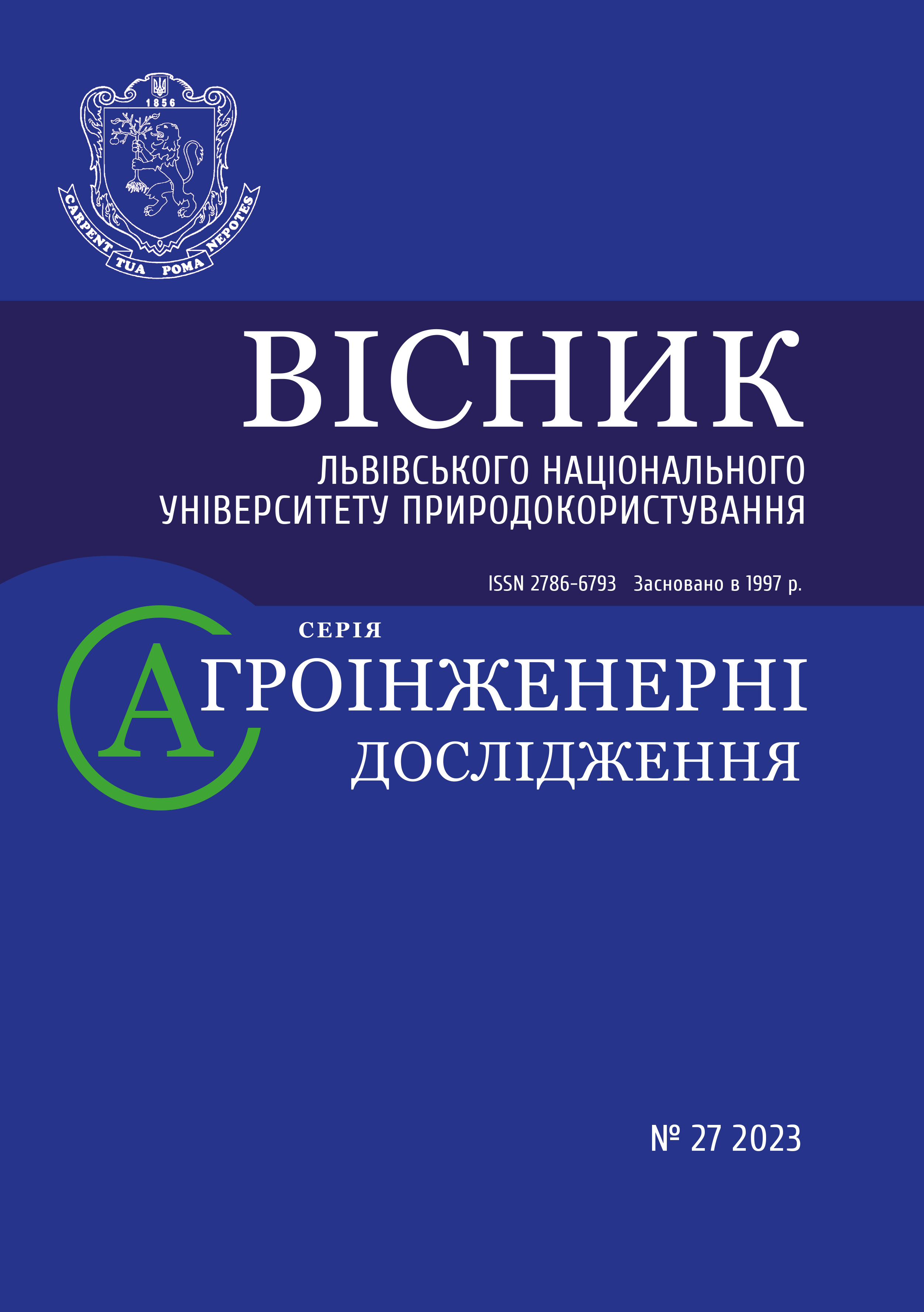Адаптивно-ціннісний підхід до управління проєктами розвитку громад та регіонів
DOI:
https://doi.org/10.31734/agroengineering2023.27.113Ключові слова:
управління, проєкти, розвиток, громади, регіони, адаптивно-ціннісний підхідАнотація
Виконаний аналіз стану питання в теорії та практиці реалізації проєктів розвитку громад та регіонів. Встановлено, що для проєктного та портфельного управління наявні методології та підходи, які мають переваги та недоліки. Обґрунтована доцільність розроблення адаптивно-ціннісного підходу до управління проєктами розвитку громад та регіонів, який забезпечить усунення існуючих недоліків. Запропонований адаптивно-ціннісний підхід забезпечує врахування особливостей та специфіки проєктів розвитку громад та регіонів і враховує сучасні реалії громад, що лежать в основі ефективного управління проєктами їх розвитку.
Запропонований адаптивно-ціннісний підхід до управління проєктами розвитку громад та регіонів враховує невизначеність та ризики, що властиві проєктам розвитку громад, а також забезпечує досягнення цілей та створення максимальної цінності для стейкхолдерів. На підставі адаптивно-ціннісного підходу розроблено алгоритм управління проєктами розвитку громад та регіонів, який охоплює 14 кроків, що відображають виконання процесів з обґрунтованими їх особливостями. Між цими етапами існують взаємозв'язки, які системно зумовлюють формування портфелів проєктів із максимальною їх цінністю та врахуванням змін проєктного середовища.
У результаті виконаних досліджень сформовано проєктні ідеї та їх альтернативи для портфелів проєктів розвитку громади. Сформовано варіанти конфігурації проєктів розвитку громад у різних сферах, а також використовуючи представлений вище підхід для кожного з цих варіантів визначено показники доцільності включення проєктів у портфель розвитку громади. Сформовано портфель проєктів розвитку для умов заданої громади, який включає 4 проєкти (проєкт 5 – створення природного заповідника та відновлення місцевої екосистеми, проєкт 3 – встановлення відеоспостереження в громадських місцях, проєкт 6 – розбудова системи переробки органічних відходів та проєкт 4 – розширення програми патрулювання добровільними формуваннями) загальним бюджетом 1700 тис. $ та сумарною цінністю для стейкхолдерів – 1,96. Подальші дослідження слід проводити в напрямі розробки системи підтримки прийняття рішень для проєктних менеджерів, яка базуватиметься на запропонованому адаптивно-ціннісному підході до управління проєктами розвитку громад та регіонів.
Посилання
Analysis of the methodology of project management. Retrieved from http://infostart.ru/public/296315/.
Azarova, I. B. (2016). The value-oriented approach in managing the investment housing construction projects: Dis. ... Cand. tech. sciences: 05.13.22. Kharkiv.
Bashynsky, О. (2019). Coordination of dairy workshops projects on the community territory and their project environment. International Scientific and Technical Conference on Computer Sciences and Information Technologies, 3, 51–54.
Batyuk, B., & Dyndyn, M. (2020). Coordination of configurations of complex organizational and technical systems for development of agricultural sector branches. Journal of Automation and Information Sciences, 2(2), 63–76.
Bushuev, S. D., & Kharytonov, D. A. (2010). Value approach in managing the complex system development. Management of the complex system development: coll. scient. works KNUBA. Кyiv, 1, 10-15.
Bushuyev, S., & Verenych, O. (2018). Organizational Maturity and Project: Program and Portfolio Success. Developing Organizational Maturity for Effective Project Management (Chapter 6: Organizational Maturity and Project: Program and Portfolio Success), 104-127. doi: 10.4018/978-1-5225-3197-5
ISO 21500:2012. Guidance on Project Management. Retrieved from www.mosaicprojects.com.au/PDF/ISO_21500_ Communique_ No1.pdf.
Koval, N., Kondysiuk, I., Tryhuba, I., Boiarchuk, O., & Rudynets, M. (2021). Forecasting the Fund of Time for Performance of Works in Hybrid Projects Using Machine Training Technologies. MoMLeT+ DS, 196-206.
Kovalchuk, O., Zachko, O., & Kobylkin, D. (2022). Criteria for intellectual forming a project teams in safety oriented system. 17th International Scientific and Technical Conference on Computer Sciences and Information Technologies (CSIT), 2, 430–433.
Moore: Upravlinnia portfelem proiektiv. Retrieved from http://surl.li/bsklv.
P2M: model of innovative project management. Retrieved from https://studfiles.net/preview/1851808/#10.
PMBOK vs PRINCE2 vs Agile project management. Retrieved from https://www.cio.com.au/article/402347/pmbok_vs_prince2_vs_agile_project_manage ment/.
Ratushnyi, R., Khmel, P., Martyn, E., & Prydatko, O. (2019). Substantiating the effectiveness of projects for the construction of dual systems of fire suppression. Eastern-European Journal of Enterprise Technologies, 4 (3-100), 46–53.
Tryhuba, A. M., & Sydorchuk, O. V. (2010). Peculiarities of planning projects and programs of agrarian production. Materials of VI International conference “Project management: conditions and prospects”. Mykolaiv, 313-316.
Tryhuba, A., Boyarchuk, V., & Tryhuba, I. (2019). Forecasting of a lifecycle of the projects of production of biofuel raw materials with consideration of risks. International Conference on Advanced Trends in Information Theory (ATIT), 420–425.
Tryhuba, A., Boyarchuk, V., Tryhuba, I., Ftoma, O., Padyuka, R., & Rudynets, M. (2021). Forecasting the risk of the resource demand for dairy farms basing on machine learning. CEUR Workshop Proceedings, 2631, 327–340.
Tryhuba, A., Koval, N., Tryhuba, I., & Boiarchuk, O. (2022). Application of sarima models in information systems forecasting seasonal volumes of food raw materials of procurement on the territory of communities. CEUR Workshop Proceedings, 3295, 64–75.
Tryhuba, A., Ratushny, R., Bashynsky, O., & Ptashnyk, V. (2020). Planning of Territorial Location of Fire-Rescue Formations in Administrative Territory Development Projects. CEUR Workshop Proceedings 2565, 18-20.
Tryhuba, A., Rudynets, M., Pavlikha, N., Tryhuba, I., Kytsyuk, I., Komeliuk, O. … Seleznov, D. (2019). Establishing patterns of change in the indicators of using milk processing shops at a community territory. Eastern-European Journal of Enterprise Technologies: Control processes, 3/6. 102, 57–65.
Tryhuba, A., Tryhuba, I., & Bashynsky, O. (2020). Conceptual model of management of technologically integrated industry development projects. Proceedings of the 15th International Scientific and Technical Conference on Computer Sciences and Information Technologies, 155–158. doi: 10.1109/CSIT49958.2020.9321903.
Tryhuba, A., Tryhuba, I., Ftoma, O., & Boyarchuk, O. (2019). Method of quantitative evaluation of the risk of benefits for investors of fodder-producing cooperatives. International Scientific and Technical Conference on Computer Sciences and Information Technologies, 3, 55–58.
Тryhuba, A., Bashynskyi, O., Medvediev, Y., Slobodian, S., & Skorobogatov, D. (2019). Justification of models of changing project environment for harvesting grain, oilseed and legume crops. Independent Journal of Management & Production, 10 (7), 658-672.


